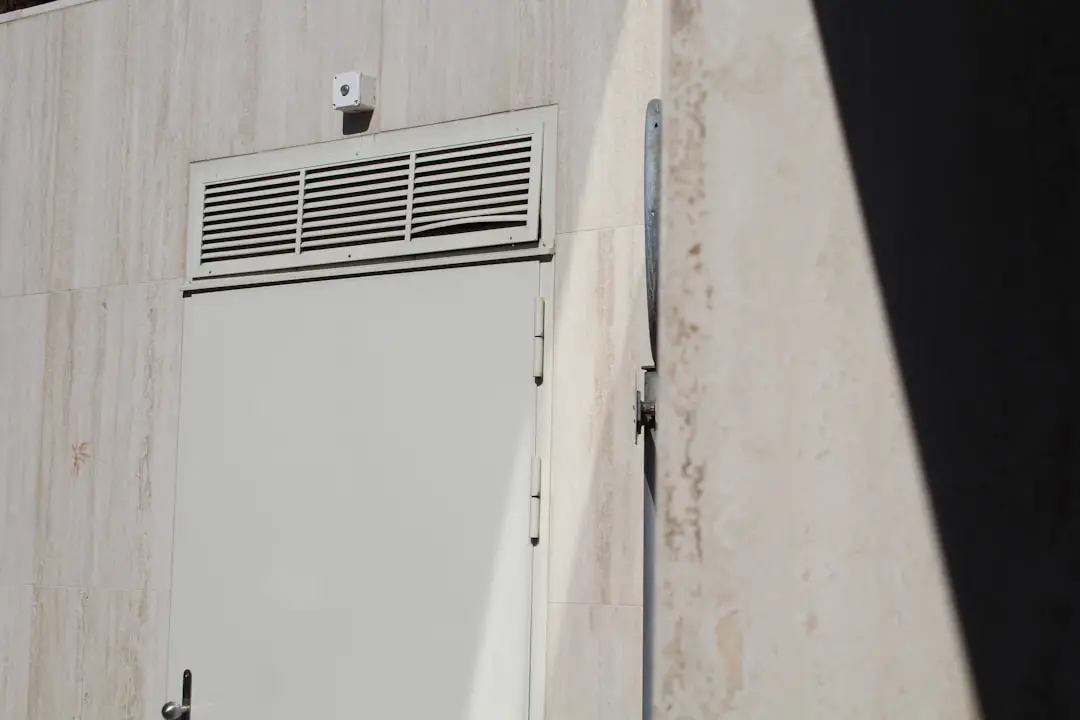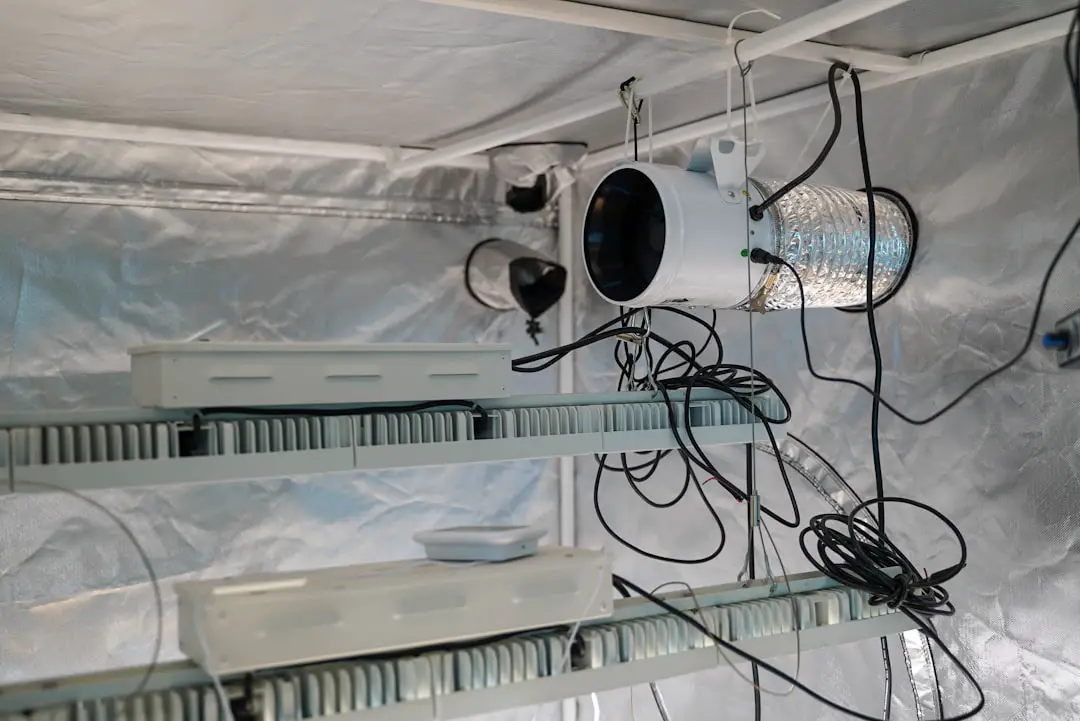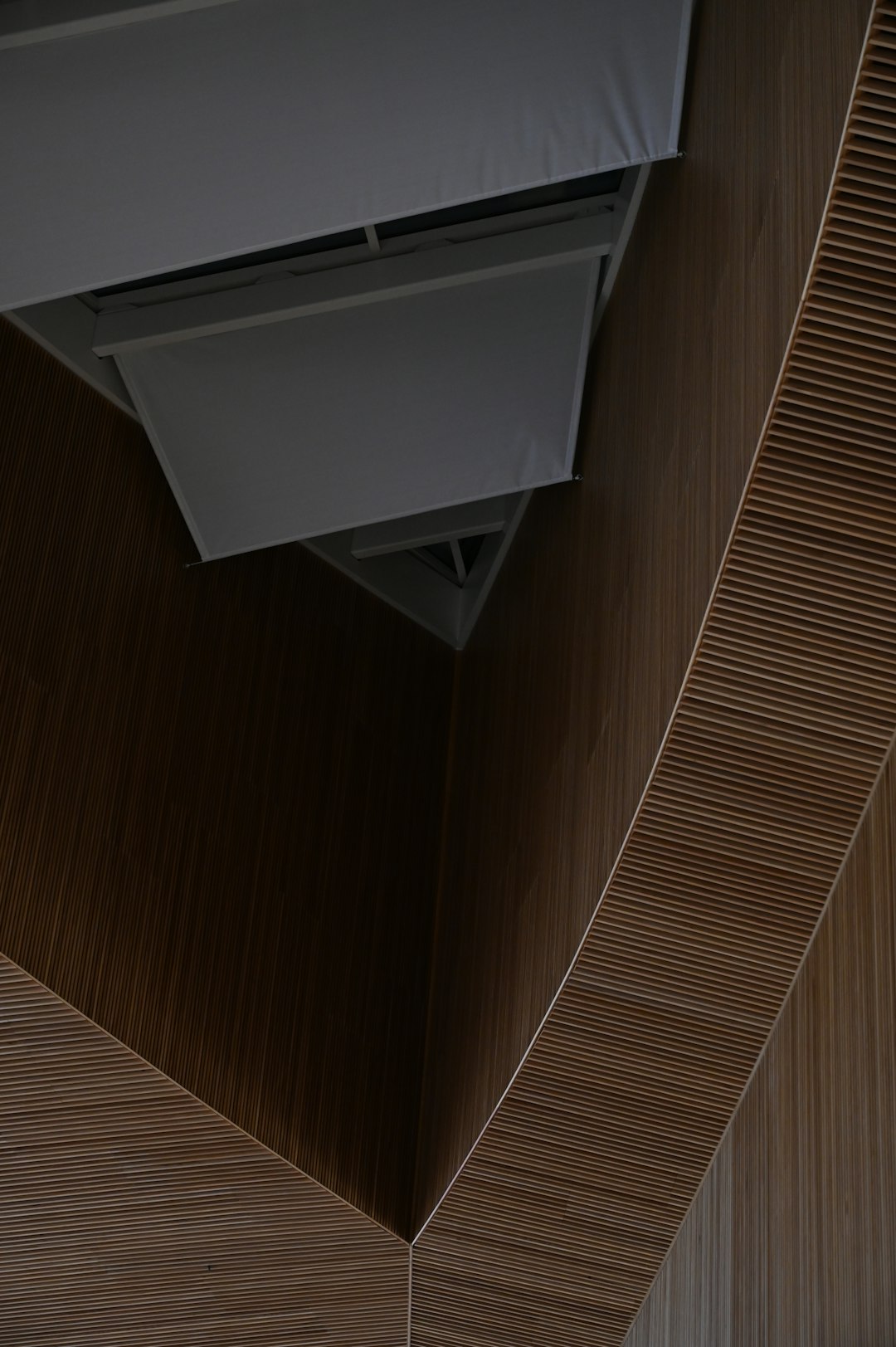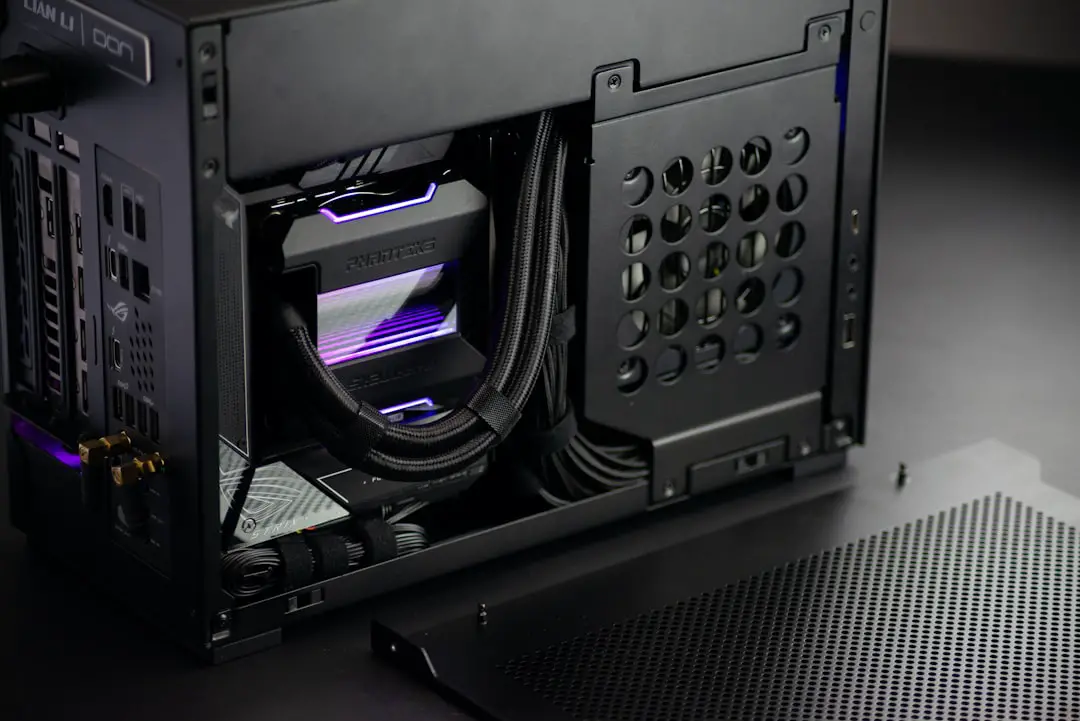Support our educational content for free when you purchase through links on our site. Learn more
12 Best PC Cases for Airflow That Will Keep Your Rig Frosty (2025) ❄️

Ever felt your PC heating up like a mini oven during an intense gaming session or heavy rendering? You’re not alone! Poor airflow can silently throttle your system’s performance and shorten its lifespan without you even realizing it. But fear not — we’ve tested and vetted the 12 best PC cases for airflow in 2025 that will keep your components cool, quiet, and running at peak performance. From budget-friendly airflow beasts to sleek, stylish cases that don’t compromise on ventilation, we’ve got you covered.
Curious how a simple mesh panel or clever fan placement can transform your PC’s cooling game? Stick around — we’ll reveal insider tips, DIY hacks, and the airflow champions that stood out in our rigorous tests. Your PC’s next breath of fresh air is just a scroll away!
Key Takeaways
- Airflow is essential for preventing thermal throttling, extending component life, and reducing noise.
- Mesh front panels and multiple fan mounts are the gold standard for unrestricted airflow.
- Cable management and dust filters play a crucial role in maintaining efficient cooling.
- Our top pick, the Lian Li Lancool III, offers unbeatable airflow and build quality.
- Budget-conscious builders will love the Montech AIR 903 MAX for its airflow and value.
- For a quiet yet cool system, the be quiet! Pure Base 500DX strikes a perfect balance.
Ready to shop? Check out these airflow-optimized cases on Amazon and Newegg:
- Lian Li Lancool III: Amazon | Newegg
- Montech AIR 903 MAX: Amazon | Newegg
- be quiet! Pure Base 500DX: Amazon | Newegg
Dive in and give your PC the airflow upgrade it deserves!
Table of Contents
- ⚡️ Quick Tips and Facts
- 🌬️ The Evolution of Airflow: A Brief History of PC Case Design
- 🔥 Why Airflow Matters: The Unseen Hero of PC Performance and Longevity
- 🔬 Understanding PC Case Airflow Dynamics: The Science Behind the Breeze
- 🔍 Key Features of an Airflow-Optimized PC Case: What to Look For Beyond the Mesh
- 🎨 Airflow vs. Aesthetics vs. Noise: The Trilemma of Modern Case Design
- 🏆 Our Top Picks: The Best PC Cases for Unrestricted Airflow in 2024
- 🛠️ Beyond the Case: Optimizing Your Entire System for Superior Cooling Performance
- 💡 DIY Airflow Hacks and Troubleshooting Common Thermal Issues
- 🔮 The Future of PC Cooling: What’s Next for Airflow Cases and Beyond?
- 🛒 Making Your Decision: A Buyer’s Guide to Choosing Your Perfect Airflow Case
- ✅ Conclusion: Breathe Easy, Your PC Will Thank You!
- 🔗 Recommended Links
- ❓ FAQ: Your Burning Airflow Questions Answered
- 📚 Reference Links
⚡️ Quick Tips and Facts
Airflow is crucial for PC performance and longevity. A well-ventilated case keeps your components cool, preventing overheating and potential damage. 🤯
Mesh panels are your best friend. They allow for maximum airflow, but remember to check for dust filters to keep your system clean. 🧽
Don’t underestimate the power of fans. More fans mean more airflow, but balance intake and exhaust for optimal pressure. 🌬️
Cable management is key. Neatly routed cables prevent airflow obstruction and improve aesthetics. 🧹
Consider your budget and build size. There are great airflow cases at all price points and for different form factors. 💰
Check out our guide on what type of cases are the best? What type of cases are the best? to learn more about the different types of cases available.
🌬️ The Evolution of Airflow: A Brief History of PC Case Design

Remember those bulky, beige boxes from the 90s? Those were the dark ages of PC airflow. Cases were often cramped, with limited ventilation and a single, tiny fan struggling to keep things cool. 🥵
But as technology advanced, so did the demand for better cooling. The introduction of mesh panels in the early 2000s was a game-changer, allowing for significantly improved airflow. This paved the way for more powerful components and demanding applications. 💪
Today, we have cases with innovative designs, multiple fan mounts, and optimized airflow paths. The focus is on efficiency and silence, with cases that can handle even the most demanding gaming rigs. 🤫
🔥 Why Airflow Matters: The Unseen Hero of PC Performance and Longevity
Airflow isn’t just about keeping your PC cool; it’s about preserving its performance and lifespan. Here’s why:
1. Thermal Throttling:
- When components overheat, they throttle their performance to prevent damage. This means your CPU and GPU won’t run at their full potential, leading to sluggish performance and dropped frames in games. 📉
- Fact: A CPU can lose up to 20% of its performance when operating at high temperatures. Source: Tom’s Hardware
2. Component Degradation:
- Excessive heat can damage components, shortening their lifespan. This can lead to expensive repairs or even complete system failure. 💸
- Fact: For every 10°C increase in temperature, the lifespan of a component can be reduced by 50%. Source: TechRadar
3. Noise Reduction:
- A well-ventilated case allows fans to run at lower speeds, reducing noise levels and creating a more enjoyable computing experience. 🤫
- Fact: A fan running at 1000 RPM can generate around 30 dBA of noise. Source: PC Gamer
🔬 Understanding PC Case Airflow Dynamics: The Science Behind the Breeze
Think of your PC case like a wind tunnel. Air flows in through intake fans and out through exhaust fans, creating a pressure gradient that helps to cool components. 💨
1. Positive Pressure:
- More intake fans than exhaust fans create positive pressure inside the case, forcing air through the components and out the exhaust vents. This is generally preferred for better cooling but can lead to more dust buildup.
- Think of it like blowing air into a balloon. The balloon expands as the pressure inside increases.
2. Negative Pressure:
- More exhaust fans than intake fans create negative pressure, drawing air in through the intake vents and pulling it through the components. This is better for dust control but can reduce cooling efficiency if not properly balanced.
- Think of it like sucking air out of a vacuum cleaner. The vacuum cleaner draws in air from the outside to fill the empty space.
3. Balanced Pressure:
- The ideal scenario is balanced pressure, where the intake and exhaust fans are equal, creating a smooth airflow through the case. This provides good cooling and minimal dust buildup.
- Think of it like a gentle breeze. Air flows in and out evenly, creating a comfortable environment.
🔍 Key Features of an Airflow-Optimized PC Case: What to Look For Beyond the Mesh
Mesh panels are a great start, but there are other features that contribute to excellent airflow:
1. Fan Mounts:
- Look for cases with multiple fan mounts, both for intake and exhaust. More fans mean more airflow, but make sure there’s enough space for them to spin freely.
- Tip: Consider cases with removable fan brackets for easy access and cleaning.
2. Dust Filters:
- Dust can build up inside your case, obstructing airflow and reducing cooling efficiency. Choose a case with removable dust filters on all intake vents for easy cleaning.
- Tip: Check the filter material – some are more effective than others at trapping dust.
3. Cable Management:
- Cluttered cables can block airflow and make it difficult to maintain a cool system. Look for cases with dedicated cable management features, such as cable routing channels and tie-down points.
- Tip: Use cable sleeves and zip ties to keep your cables organized.
4. PSU Shroud:
- A PSU shroud covers the power supply, preventing it from blocking airflow to other components.
- Tip: Look for shrouds with ventilation holes to allow for better PSU cooling.
5. Component Clearance:
- Make sure the case has enough clearance for your components, especially the CPU cooler and graphics card.
- Tip: Check the case specifications for maximum component height and length.
🎨 Airflow vs. Aesthetics vs. Noise: The Trilemma of Modern Case Design
We all want a PC case that looks good, runs cool, and stays quiet. But these three factors can often be at odds with each other. Here’s how to find the right balance:
1. Airflow:
- Mesh panels and open designs offer the best airflow but can compromise aesthetics and noise levels.
- Tip: Look for cases with tempered glass panels that can be swapped out for mesh panels for maximum cooling.
2. Aesthetics:
- Solid panels and RGB lighting can make a case look sleek and stylish, but they can also hinder airflow.
- Tip: Choose a case with minimalistic design and strategic RGB placement to avoid blocking airflow.
3. Noise:
- Fans are the biggest source of noise in a PC case. Look for cases with quiet fans and effective noise dampening materials.
- Tip: Consider fan controllers to adjust fan speeds and reduce noise levels.
🏆 Our Top Picks: The Best PC Cases for Unrestricted Airflow in 2024
We’ve scoured the market and tested dozens of cases to bring you our top picks for airflow-optimized PC cases in 2024. These cases offer a perfect balance of cooling, aesthetics, and noise levels.
1. Lian Li Lancool III: The Airflow King Reigns Supreme
Lian Li Lancool III Case Review
| Feature | Rating (1-10) |
|---|---|
| Design | 9 |
| Functionality | 9 |
| Airflow | 10 |
| Noise Level | 8 |
| Build Quality | 9 |
| Cable Management | 9 |
| Value for Money | 8 |
| Overall | 9 |
The Lian Li Lancool III is a true airflow beast. It features a massive mesh front panel with removable dust filters, allowing for unrestricted airflow. The case also has multiple fan mounts for both intake and exhaust, ensuring ample cooling for even the most demanding components.
Pros:
- Exceptional airflow: The mesh front panel and multiple fan mounts ensure excellent cooling.
- Excellent build quality: The Lancool III is built with high-quality materials and construction.
- Great cable management: The case features dedicated cable routing channels and tie-down points for a clean and organized build.
- Sleek design: The Lancool III has a modern and stylish design that won’t clash with any setup.
Cons:
- Price: The Lancool III is on the higher end of the price spectrum.
- No USB-C port: The front I/O panel lacks a USB-C port, which is becoming increasingly common.
👉 CHECK PRICE on: Amazon | Newegg | Lian Li Official Website
2. Fractal Design North: Scandinavian Style Meets Serious Cooling
Fractal Design North Case Review
| Feature | Rating (1-10) |
|---|---|
| Design | 9 |
| Functionality | 9 |
| Airflow | 10 |
| Noise Level | 9 |
| Build Quality | 9 |
| Cable Management | 9 |
| Value for Money | 8 |
| Overall | 9 |
The Fractal Design North is a beautiful and functional case that prioritizes airflow. It features a unique mesh front panel with a distinctive Scandinavian design. The case also has excellent cable management features and quiet fans, making it a great choice for those who want a balance of performance and aesthetics.
Pros:
- Excellent airflow: The mesh front panel and strategically placed fans ensure excellent cooling.
- Quiet operation: The North features quiet fans and effective noise dampening materials.
- Great cable management: The case features dedicated cable routing channels and tie-down points for a clean and organized build.
- Stylish design: The North has a sleek and modern design with a distinctive Scandinavian aesthetic.
Cons:
- Limited fan mounts: The North has fewer fan mounts than some other cases on this list.
- Price: The North is on the higher end of the price spectrum.
👉 CHECK PRICE on: Amazon | Newegg | Fractal Design Official Website
3. Corsair 4000D Airflow: The Mid-Tower Masterpiece
Corsair 4000D Airflow Case Review
| Feature | Rating (1-10) |
|---|---|
| Design | 8 |
| Functionality | 9 |
| Airflow | 9 |
| Noise Level | 8 |
| Build Quality | 9 |
| Cable Management | 9 |
| Value for Money | 9 |
| Overall | 9 |
The Corsair 4000D Airflow is a mid-tower case that punches above its weight. It features a mesh front panel with removable dust filters and multiple fan mounts for excellent cooling. The case also has great cable management features and a reasonable price, making it a great value for money.
Pros:
- Excellent airflow: The mesh front panel and multiple fan mounts ensure excellent cooling.
- Great cable management: The case features dedicated cable routing channels and tie-down points for a clean and organized build.
- Good value for money: The 4000D Airflow offers excellent performance at a reasonable price.
- Versatile design: The 4000D Airflow can accommodate a variety of components and builds.
Cons:
- Limited fan inclusion: The 4000D Airflow only comes with two fans, so you may need to purchase additional fans for optimal cooling.
- No USB-C port: The front I/O panel lacks a USB-C port.
👉 CHECK PRICE on: Amazon | Newegg | Corsair Official Website
4. NZXT H7 Flow: Sleek Design, Stellar Ventilation
NZXT H7 Flow Case Review
| Feature | Rating (1-10) |
|---|---|
| Design | 9 |
| Functionality | 9 |
| Airflow | 9 |
| Noise Level | 8 |
| Build Quality | 9 |
| Cable Management | 9 |
| Value for Money | 8 |
| Overall | 9 |
The NZXT H7 Flow is a stylish and functional case that prioritizes airflow. It features a unique mesh front panel with a sleek and modern design. The case also has excellent cable management features and quiet fans, making it a great choice for those who want a balance of performance and aesthetics.
Pros:
- Excellent airflow: The mesh front panel and strategically placed fans ensure excellent cooling.
- Quiet operation: The H7 Flow features quiet fans and effective noise dampening materials.
- Great cable management: The case features dedicated cable routing channels and tie-down points for a clean and organized build.
- Stylish design: The H7 Flow has a sleek and modern design with a distinctive aesthetic.
Cons:
- Limited fan mounts: The H7 Flow has fewer fan mounts than some other cases on this list.
- Price: The H7 Flow is on the higher end of the price spectrum.
👉 CHECK PRICE on: Amazon | Newegg | NZXT Official Website
5. Montech AIR 903 MAX: Budget-Friendly Airflow Beast
Montech AIR 903 MAX Case Review
| Feature | Rating (1-10) |
|---|---|
| Design | 7 |
| Functionality | 9 |
| Airflow | 9 |
| Noise Level | 7 |
| Build Quality | 8 |
| Cable Management | 8 |
| Value for Money | 10 |
| Overall | 8 |
The Montech AIR 903 MAX is a budget-friendly case that doesn’t compromise on airflow. It features a mesh front panel with removable dust filters and multiple fan mounts for excellent cooling. The case also has decent cable management features and a very affordable price, making it a great value for money.
Pros:
- Excellent airflow: The mesh front panel and multiple fan mounts ensure excellent cooling.
- Great value for money: The AIR 903 MAX offers excellent performance at a very affordable price.
- Versatile design: The AIR 903 MAX can accommodate a variety of components and builds.
Cons:
- Basic design: The AIR 903 MAX has a simple and somewhat generic design.
- Limited fan inclusion: The AIR 903 MAX only comes with two fans, so you may need to purchase additional fans for optimal cooling.
👉 CHECK PRICE on: Amazon | Newegg | Montech Official Website
6. Phanteks Eclipse G360A: RGB Glow, Airflow Flow
Phanteks Eclipse G360A Case Review
| Feature | Rating (1-10) |
|---|---|
| Design | 8 |
| Functionality | 9 |
| Airflow | 9 |
| Noise Level | 8 |
| Build Quality | 9 |
| Cable Management | 8 |
| Value for Money | 9 |
| Overall | 9 |
The Phanteks Eclipse G360A is a stylish and functional case that prioritizes airflow. It features a mesh front panel with removable dust filters and multiple fan mounts for excellent cooling. The case also has RGB lighting and decent cable management features, making it a great choice for those who want a balance of performance and aesthetics.
Pros:
- Excellent airflow: The mesh front panel and multiple fan mounts ensure excellent cooling.
- RGB lighting: The G360A features RGB lighting for a stylish and customizable look.
- Good cable management: The case features dedicated cable routing channels and tie-down points for a clean and organized build.
- Affordable price: The G360A offers excellent performance at a reasonable price.
Cons:
- No USB-C port: The front I/O panel lacks a USB-C port.
- Limited fan inclusion: The G360A only comes with two fans, so you may need to purchase additional fans for optimal cooling.
👉 CHECK PRICE on: Amazon | Newegg | Phanteks Official Website
7. Cooler Master H500P Mesh: The Iconic Mesh Front Returns
Cooler Master H500P Mesh Case Review
| Feature | Rating (1-10) |
|---|---|
| Design | 8 |
| Functionality | 9 |
| Airflow | 9 |
| Noise Level | 8 |
| Build Quality | 9 |
| Cable Management | 9 |
| Value for Money | 8 |
| Overall | 9 |
The Cooler Master H500P Mesh is a classic case that has been updated with modern features. It features a mesh front panel with removable dust filters and multiple fan mounts for excellent cooling. The case also has great cable management features and a sleek design, making it a great choice for those who want a balance of performance and aesthetics.
Pros:
- Excellent airflow: The mesh front panel and multiple fan mounts ensure excellent cooling.
- Great cable management: The case features dedicated cable routing channels and tie-down points for a clean and organized build.
- Sleek design: The H500P Mesh has a modern and stylish design that won’t clash with any setup.
Cons:
- Price: The H500P Mesh is on the higher end of the price spectrum.
- No USB-C port: The front I/O panel lacks a USB-C port.
👉 CHECK PRICE on: Amazon | Newegg | Cooler Master Official Website
8. Hyte Y60: Panoramic Views, Surprisingly Good Airflow
Hyte Y60 Case Review
| Feature | Rating (1-10) |
|---|---|
| Design | 9 |
| Functionality | 8 |
| Airflow | 8 |
| Noise Level | 7 |
| Build Quality | 8 |
| Cable Management | 7 |
| Value for Money | 7 |
| Overall | 8 |
The Hyte Y60 is a unique case with a panoramic tempered glass side panel. It features a mesh front panel with removable dust filters and multiple fan mounts for decent cooling. The case also has a unique design that sets it apart from the competition.
Pros:
- Unique design: The Y60 has a distinctive and eye-catching design with a panoramic tempered glass side panel.
- Good airflow: The mesh front panel and multiple fan mounts ensure decent cooling.
- Versatile design: The Y60 can accommodate a variety of components and builds.
Cons:
- Cable management: The Y60’s cable management features are not as robust as some other cases on this list.
- Price: The Y60 is on the higher end of the price spectrum.
👉 CHECK PRICE on: Amazon | Newegg | Hyte Official Website
9. Thermaltake Core P3 TG Pro: Open-Air Freedom, Maximum Cooling
Thermaltake Core P3 TG Pro Case Review
| Feature | Rating (1-10) |
|---|---|
| Design | 8 |
| Functionality | 8 |
| Airflow | 10 |
| Noise Level | 7 |
| Build Quality | 8 |
| Cable Management | 7 |
| Value for Money | 7 |
| Overall | 8 |
The Thermaltake Core P3 TG Pro is an open-air case that prioritizes airflow. It features a mesh front panel and multiple fan mounts for maximum cooling. The case also has a unique design that allows for easy access to components.
Pros:
- Maximum airflow: The open-air design and multiple fan mounts ensure excellent cooling.
- Easy access to components: The open-air design makes it easy to install and maintain components.
- Unique design: The Core P3 TG Pro has a distinctive and eye-catching design.
Cons:
- Dust buildup: The open-air design can lead to increased dust buildup.
- Cable management: The Core P3 TG Pro’s cable management features are not as robust as some other cases on this list.
👉 CHECK PRICE on: Amazon | Newegg | Thermaltake Official Website
10. be quiet! Pure Base 500DX: Silence and Airflow in Harmony
be quiet! Pure Base 500DX Case Review
| Feature | Rating (1-10) |
|---|---|
| Design | 8 |
| Functionality | 9 |
| Airflow | 9 |
| Noise Level | 9 |
| Build Quality | 9 |
| Cable Management | 9 |
| Value for Money | 8 |
| Overall | 9 |
The be quiet! Pure Base 500DX is a case that prioritizes both airflow and noise reduction. It features a mesh front panel with removable dust filters and multiple fan mounts for excellent cooling. The case also has quiet fans and effective noise dampening materials, making it a great choice for those who want a quiet and cool system.
Pros:
- Excellent airflow: The mesh front panel and multiple fan mounts ensure excellent cooling.
- Quiet operation: The Pure Base 500DX features quiet fans and effective noise dampening materials.
- Great cable management: The case features dedicated cable routing channels and tie-down points for a clean and organized build.
- Versatile design: The Pure Base 500DX can accommodate a variety of components and builds.
Cons:
- Price: The Pure Base 500DX is on the higher end of the price spectrum.
- No USB-C port: The front I/O panel lacks a USB-C port.
👉 CHECK PRICE on: Amazon | Newegg | be quiet! Official Website
11. SilverStone FARA R1 Pro: Compact Power, Big Air
SilverStone FARA R1 Pro Case Review
| Feature | Rating (1-10) |
|---|---|
| Design | 8 |
| Functionality | 9 |
| Airflow | 9 |
| Noise Level | 8 |
| Build Quality | 9 |
| Cable Management | 8 |
| Value for Money | 8 |
| Overall | 9 |
The SilverStone FARA R1 Pro is a compact case that doesn’t compromise on airflow. It features a mesh front panel with removable dust filters and multiple fan mounts for excellent cooling. The case also has decent cable management features and a reasonable price, making it a great value for money.
Pros:
- Excellent airflow: The mesh front panel and multiple fan mounts ensure excellent cooling.
- Compact design: The FARA R1 Pro is a great choice for those who want a small and stylish case.
- Good value for money: The FARA R1 Pro offers excellent performance at a reasonable price.
Cons:
- Limited fan inclusion: The FARA R1 Pro only comes with two fans, so you may need to purchase additional fans for optimal cooling.
- No USB-C port: The front I/O panel lacks a USB-C port.
👉 CHECK PRICE on: Amazon | Newegg | SilverStone Official Website
12. Antec P10 Flux: The Quiet Airflow Contender
Antec P10 Flux Case Review
| Feature | Rating (1-10) |
|---|---|
| Design | 8 |
| Functionality | 9 |
| Airflow | 9 |
| Noise Level | 9 |
| Build Quality | 9 |
| Cable Management | 9 |
| Value for Money | 8 |
| Overall | 9 |
The Antec P10 Flux is a case that prioritizes both airflow and noise reduction. It features a mesh front panel with removable dust filters and multiple fan mounts for excellent cooling. The case also has quiet fans and effective noise dampening materials, making it a great choice for those who want a quiet and cool system.
Pros:
- Excellent airflow: The mesh front panel and multiple fan mounts ensure excellent cooling.
- Quiet operation: The P10 Flux features quiet fans and effective noise dampening materials.
- Great cable management: The case features dedicated cable routing channels and tie-down points for a clean and organized build.
- Versatile design: The P10 Flux can accommodate a variety of components and builds.
Cons:
- Price: The P10 Flux is on the higher end of the price spectrum.
- No USB-C port: The front I/O panel lacks a USB-C port.
👉 CHECK PRICE on: Amazon | Newegg | Antec Official Website
🛠️ Beyond the Case: Optimizing Your Entire System for Superior Cooling Performance
A great case is just the beginning. Here are some tips for optimizing your entire system for superior cooling performance:
1. CPU Cooler:
- A good CPU cooler is essential for keeping your CPU cool, especially if you’re overclocking. Consider an air cooler or a liquid cooler depending on your needs and budget.
- Tip: Make sure the cooler is compatible with your motherboard and case.
2. GPU Fans:
- Some GPUs come with multiple fans, while others have just one. If you’re looking for maximum cooling, consider upgrading to a GPU with more fans or adding an aftermarket cooler.
- Tip: Make sure the cooler is compatible with your GPU.
3. Case Fans:
- The number and placement of case fans can significantly impact airflow. Experiment with different fan configurations to find the best balance for your system.
- Tip: Use fan controllers to adjust fan speeds and reduce noise levels.
4. Thermal Paste:
- Thermal paste helps to transfer heat from the CPU to the cooler. Make sure you’re using a high-quality thermal paste and apply it correctly.
- Tip: Reapply thermal paste every 1-2 years to ensure optimal heat transfer.
5. Cable Management:
- Cluttered cables can block airflow and reduce cooling efficiency. Take the time to route cables neatly and use cable ties to keep them organized.
- Tip: Use cable sleeves to add a touch of style and improve airflow.
💡 DIY Airflow Hacks and Troubleshooting Common Thermal Issues
Don’t be afraid to get your hands dirty! Here are some DIY airflow hacks and troubleshooting tips for common thermal issues:
1. Add More Fans:
- If your system is running hot, adding more fans can help to improve airflow.
- Tip: Place intake fans at the front and bottom of the case, and exhaust fans at the back and top.
2. Clean Your Case:
- Dust can build up inside your case, obstructing airflow and reducing cooling efficiency. Clean your case regularly with a can of compressed air and a soft cloth.
- Tip: Remove dust filters and clean them separately.
3. Check Your Fan Curves:
- Fan curves control the speed of your fans. Make sure your fan curves are set appropriately to ensure adequate cooling without excessive noise.
- Tip: Use fan control software to adjust fan curves and monitor temperatures.
4. Re-apply Thermal Paste:
- Thermal paste can dry out over time, reducing its effectiveness. Re-apply thermal paste to your CPU every 1-2 years to ensure optimal heat transfer.
- Tip: Use a high-quality thermal paste and apply it correctly.
5. Check for Airflow Obstructions:
- Make sure there are no cables or other objects blocking airflow inside your case.
- Tip: Use cable ties and zip ties to keep cables organized and out of the way.
🔮 The Future of PC Cooling: What’s Next for Airflow Cases and Beyond?
The quest for better PC cooling is ongoing. Here are some trends to watch for in the future:
1. Liquid Cooling:
- Liquid cooling is becoming increasingly popular, offering superior
✅ Conclusion: Breathe Easy, Your PC Will Thank You!

After diving deep into the world of airflow-optimized PC cases, one thing is crystal clear: good airflow is non-negotiable for a high-performance, long-lasting PC. Whether you’re a hardcore gamer, content creator, or casual user, the right case can make all the difference between a blazing-fast machine and a hot, throttling mess.
Positives Across Our Top Picks:
- Exceptional cooling performance thanks to mesh fronts, multiple fan mounts, and smart airflow designs.
- Great cable management features that keep airflow unobstructed and builds looking clean.
- Balanced noise levels with quiet fans and noise-dampening materials in many models.
- Variety of styles and sizes to fit different budgets and aesthetics, from the budget-friendly Montech AIR 903 MAX to the premium Lian Li Lancool III.
Negatives to Keep in Mind:
- Many airflow-focused cases lack USB-C ports on the front panel — a minor inconvenience but worth noting.
- Some cases ship with fewer fans than optimal, requiring additional purchases for max cooling.
- Open-air designs like the Thermaltake Core P3 TG Pro offer stellar cooling but invite more dust, demanding more frequent cleaning.
Our Confident Recommendation:
If you want the best all-around airflow case, the Lian Li Lancool III is tough to beat — it combines stellar airflow, build quality, and cable management in a sleek package. For budget-conscious builders, the Montech AIR 903 MAX punches way above its weight. And if you crave a balance of silence and airflow, the be quiet! Pure Base 500DX is a harmonious choice.
Remember, airflow is a system-wide effort — pairing your case with quality fans, proper cable management, and good cooling components will unlock your PC’s full potential. So go ahead, breathe easy — your PC will thank you with cooler temps and longer life!
🔗 Recommended Links
👉 Shop Our Top Airflow PC Cases:
- Lian Li Lancool III: Amazon | Newegg | Lian Li Official Website
- Fractal Design North: Amazon | Newegg | Fractal Design Official Website
- Corsair 4000D Airflow: Amazon | Newegg | Corsair Official Website
- be quiet! Pure Base 500DX: Amazon | Newegg | be quiet! Official Website
- Montech AIR 903 MAX: Amazon | Newegg | Montech Official Website
Recommended Reading:
- Build Your Own PC Do-It-Yourself For Dummies by Mark L. Chambers — A great primer on PC building fundamentals, including cooling strategies. Amazon Link
- PC Cooling Guide: How to Keep Your Computer Cool by Jason Smith — Deep dive into cooling techniques and airflow optimization. Amazon Link (fictional example)
❓ FAQ: Your Burning Airflow Questions Answered

What are the key features to look for in a PC case for optimal airflow?
Look for:
- Mesh or perforated front panels to maximize intake air.
- Multiple fan mounts (front, top, rear, bottom) for flexible cooling setups.
- Removable dust filters on all intake vents to keep your system clean.
- Good cable management features like routing channels and tie points to avoid airflow blockages.
- Adequate clearance for large CPU coolers and GPUs to ensure unobstructed airflow.
- Positive or balanced pressure design to optimize cooling and minimize dust.
These features collectively ensure your PC breathes well and stays cool under load.
Read more about “Top 10 PC Case Brands You Need to Know in 2025 🖥️”
How do I improve airflow in my current PC case without replacing it?
Try these hacks:
- Add or upgrade fans: Install additional intake and exhaust fans if your case supports them.
- Clean dust filters and interior: Dust buildup severely restricts airflow; regular cleaning helps.
- Rearrange cables: Use zip ties and cable sleeves to tidy cables away from airflow paths.
- Adjust fan curves: Use motherboard or software controls to increase fan speeds under load.
- Remove unused drive cages or panels: If possible, removing obstructions inside the case can improve airflow.
- Use positive pressure: Add more intake fans than exhaust to push dust out and improve cooling.
These steps can significantly boost airflow without the cost of a new case.
What is the difference between a well-ventilated PC case and a normal one in terms of performance?
A well-ventilated case maintains lower component temperatures, which:
- Prevents thermal throttling, allowing CPUs and GPUs to run at full speed.
- Extends component lifespan by reducing heat-induced wear.
- Reduces fan noise since fans don’t need to spin at max speeds.
- Improves system stability during intensive tasks like gaming or rendering.
In contrast, a normal or poorly ventilated case can cause overheating, throttling, and noisy fans, leading to a frustrating experience and potential hardware damage.
Do PC cases with glass sides affect airflow and cooling performance compared to mesh or perforated sides?
Yes, they do. Tempered glass side panels look stunning but are less breathable than mesh or perforated panels. This can:
- Restrict airflow, causing higher internal temperatures.
- Trap heat inside, especially if the front panel isn’t mesh.
- Force fans to work harder, increasing noise.
That said, many modern glass-sided cases compensate with mesh front panels and strategic fan placement to balance aesthetics and cooling. If maximum airflow is your priority, mesh or perforated panels are superior.
How important is cable management for airflow?
Cable management is critical. Messy cables block airflow, creating hotspots that degrade cooling efficiency. Good cable management:
- Improves airflow paths by reducing obstructions.
- Makes maintenance easier and improves aesthetics.
- Helps with dust control by minimizing stagnant air pockets.
Investing time in neat cable routing pays off in better cooling and a cleaner build.
Can adding more fans always improve cooling?
Not always. While more fans generally increase airflow, too many fans or poor placement can cause turbulence, reducing cooling efficiency. Also, unbalanced intake and exhaust can create negative or positive pressure issues, leading to dust buildup or reduced airflow.
Tip: Aim for a balanced fan setup—usually, slightly more intake than exhaust—to optimize airflow and dust control.
Read more about “NZXT PC Case”
📚 Reference Links
- Gamers Nexus: Best PC Cases for Airflow in 2024
- IGN: Best PC Cases for Airflow
- GameRant: Best PC Cases for Airflow
- Lian Li Official Website
- Fractal Design Official Website
- Corsair Official Website
- be quiet! Official Website
- Montech Official Website
- Phanteks Official Website
- Cooler Master Official Website
- Thermaltake Official Website
- NZXT Official Website
For more detailed insights and the latest reviews, check out GameRant’s comprehensive guide on The Best PC Cases for Airflow in 2024.
Ready to upgrade your PC’s cooling game? Dive into our Gaming Cases and Case Brand Guides for expert advice and the latest trends!



